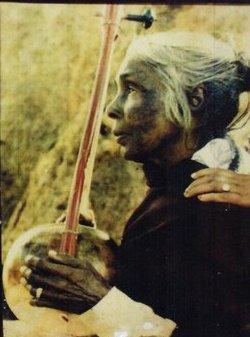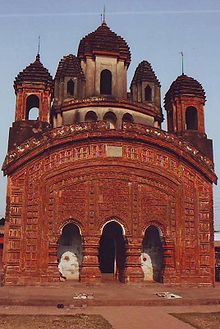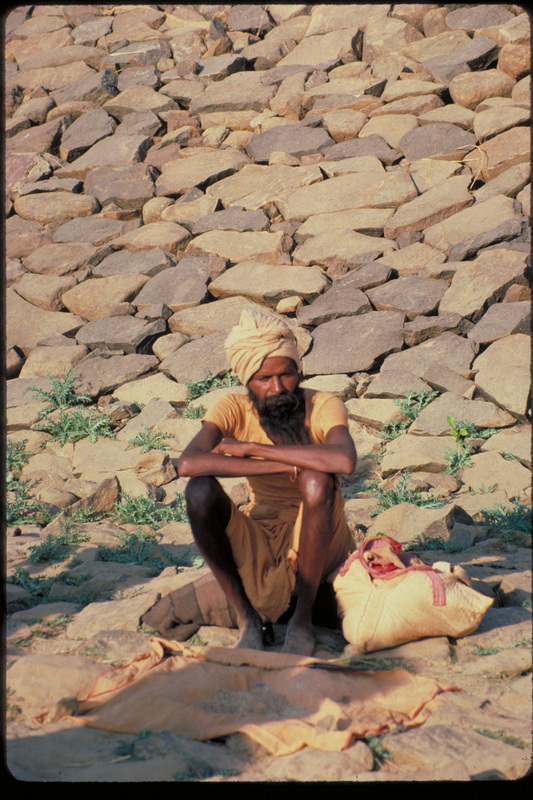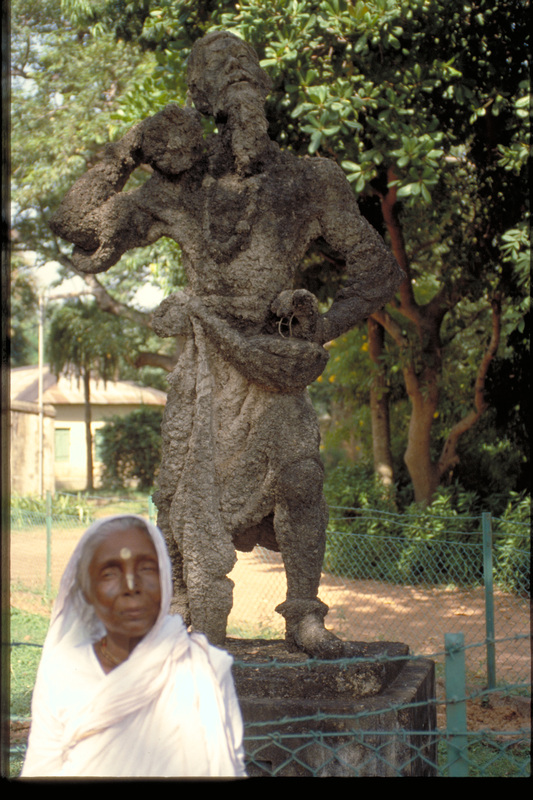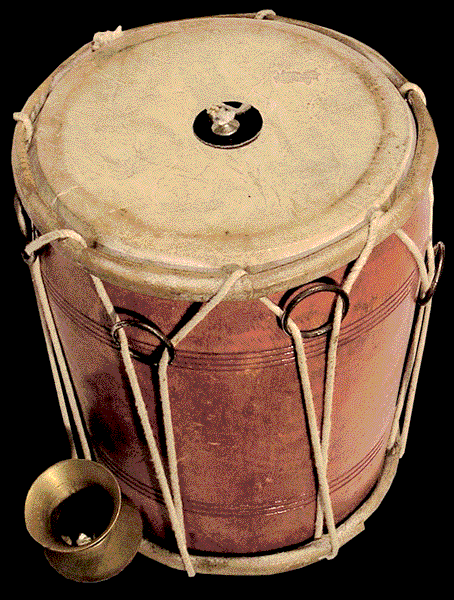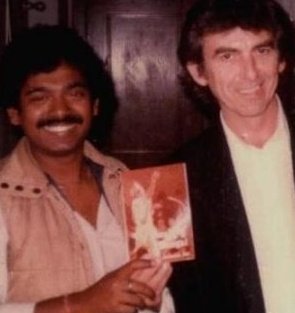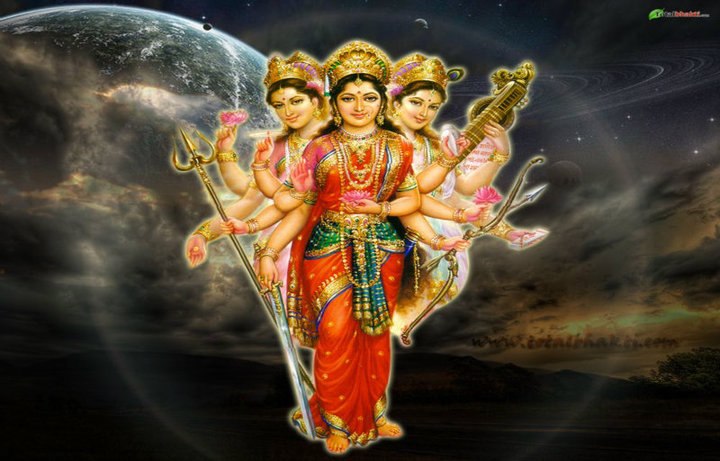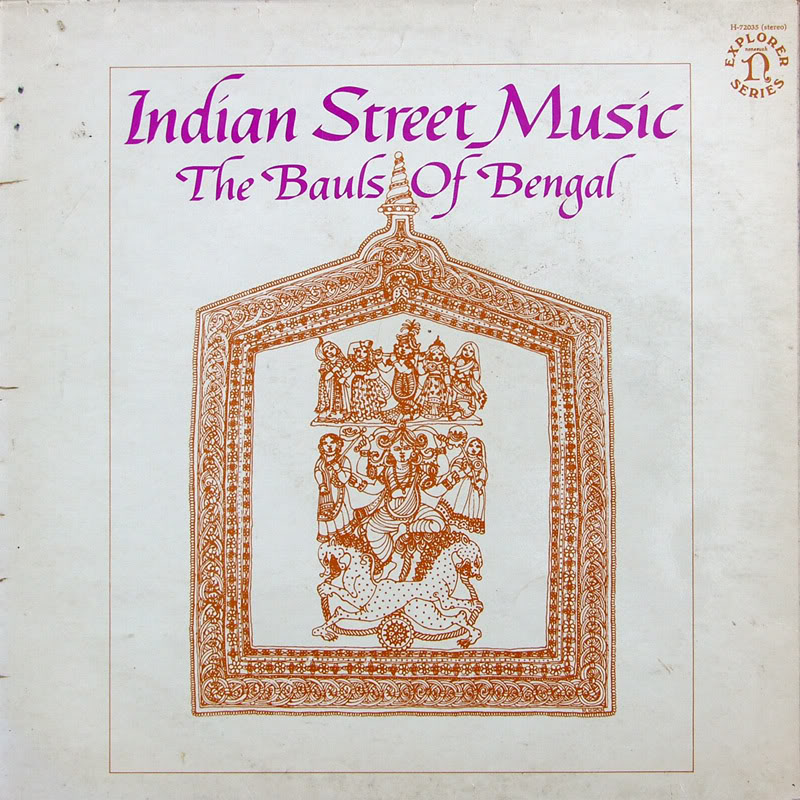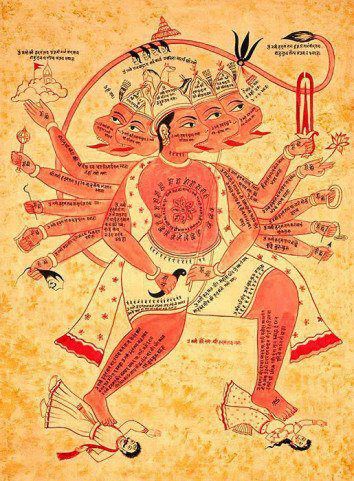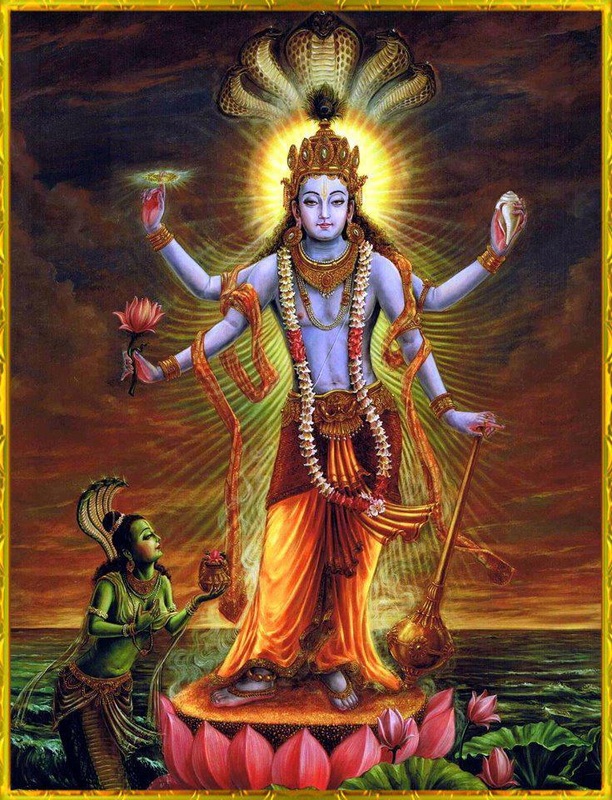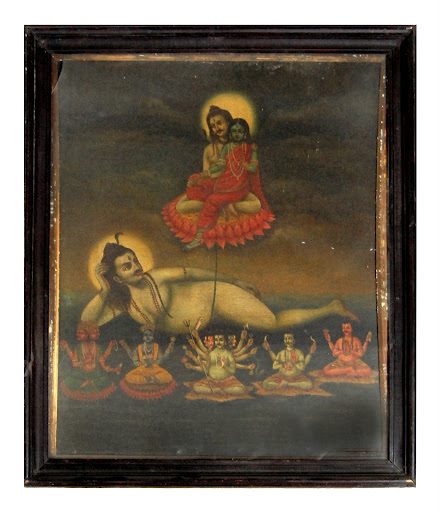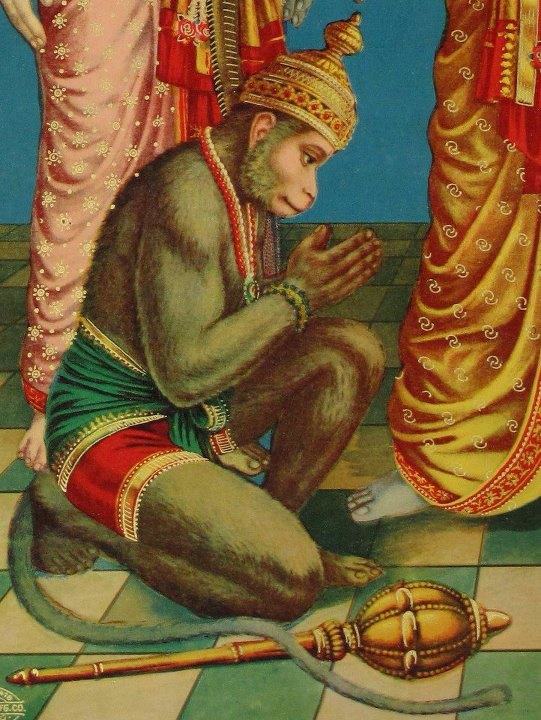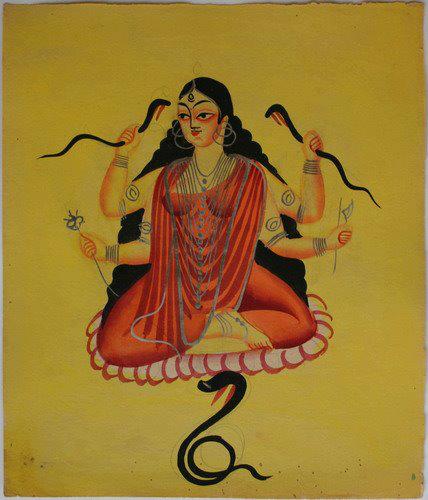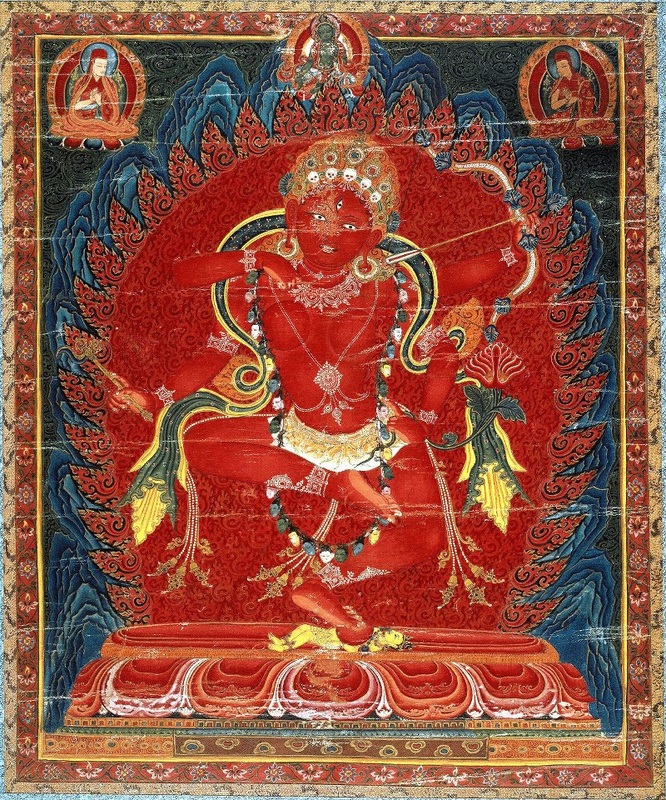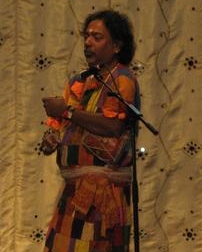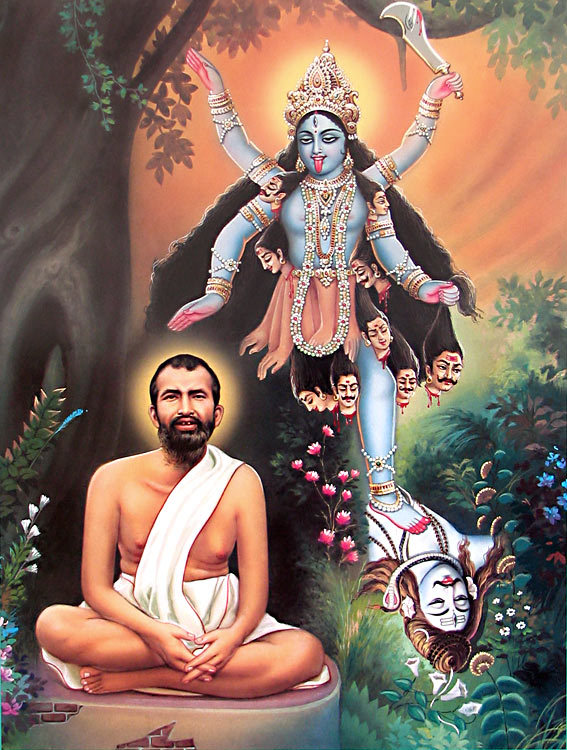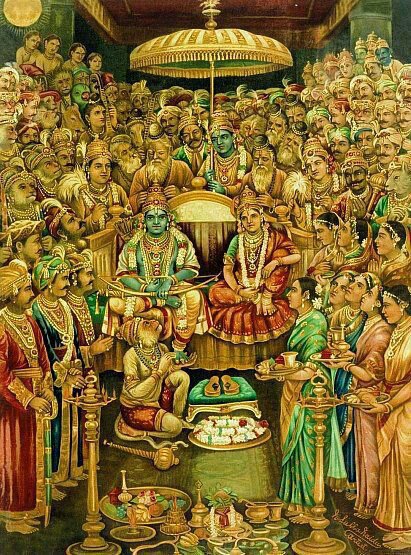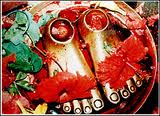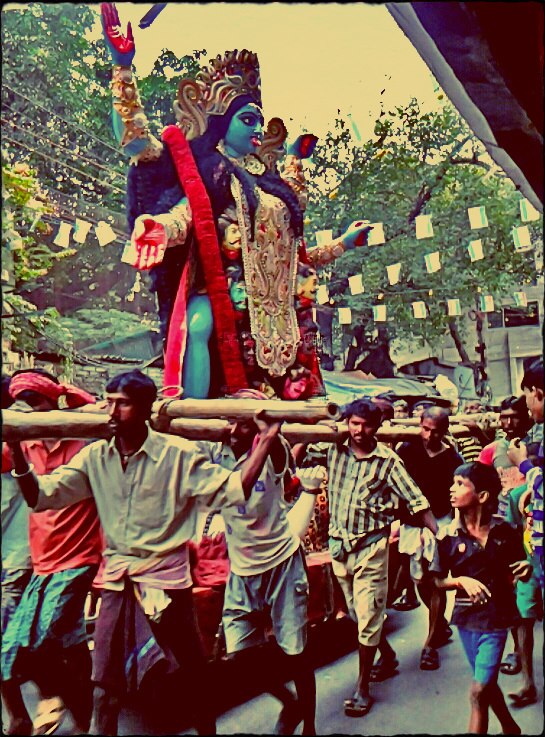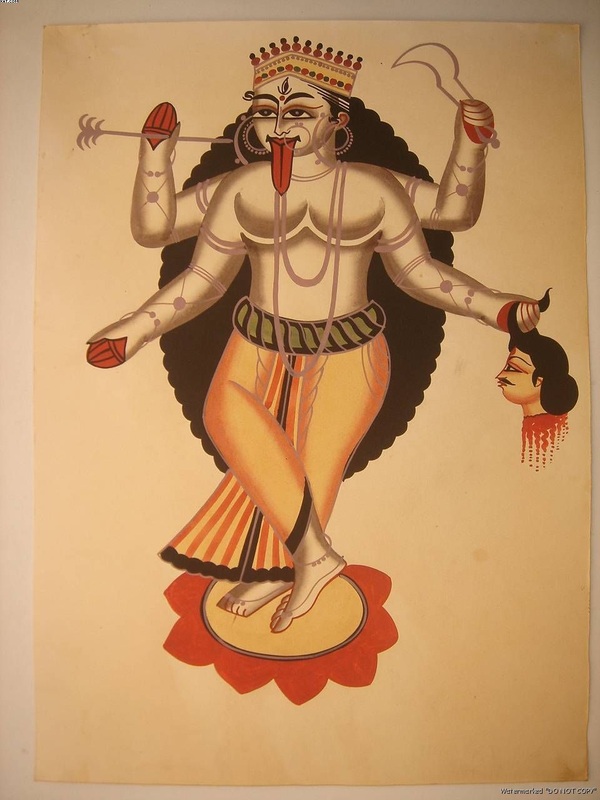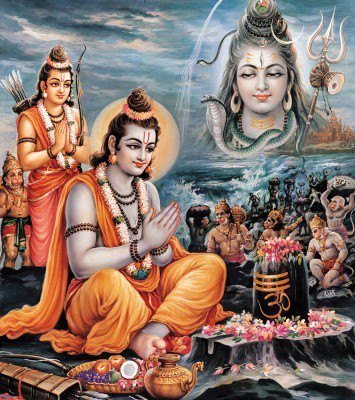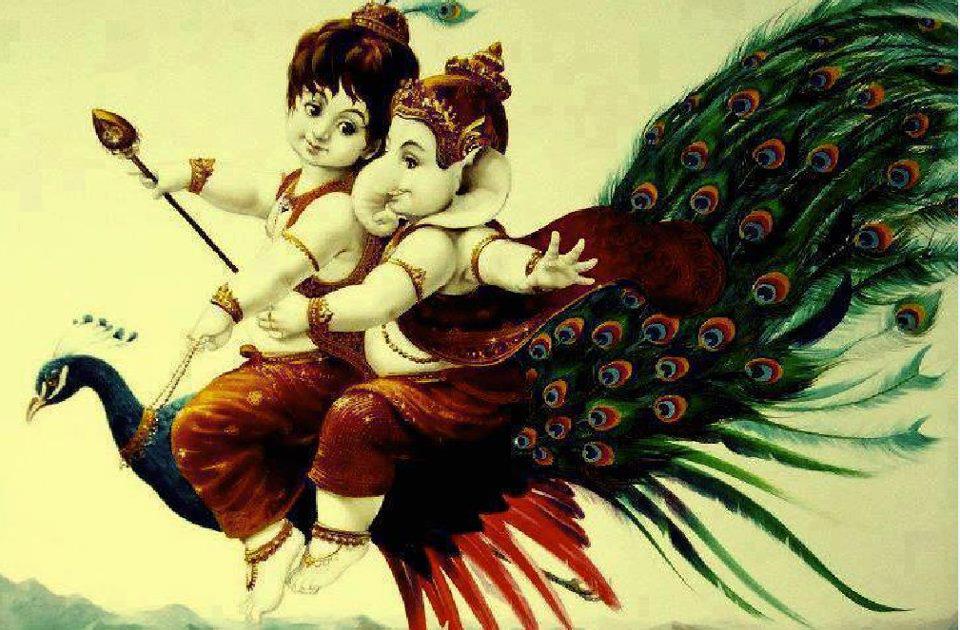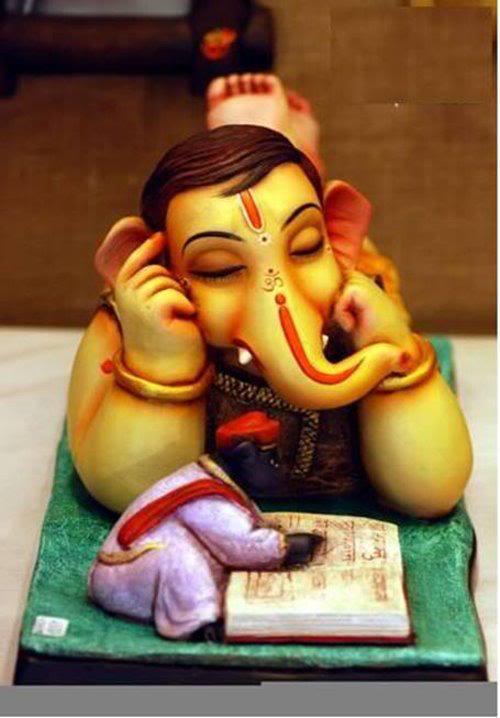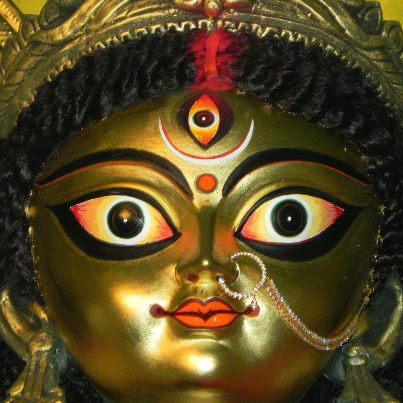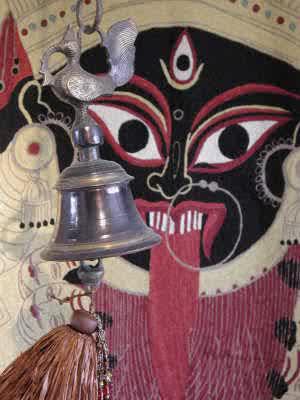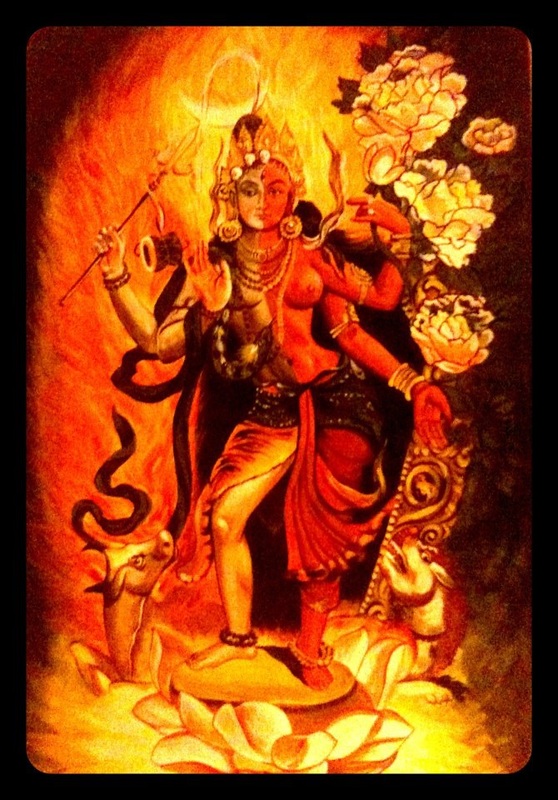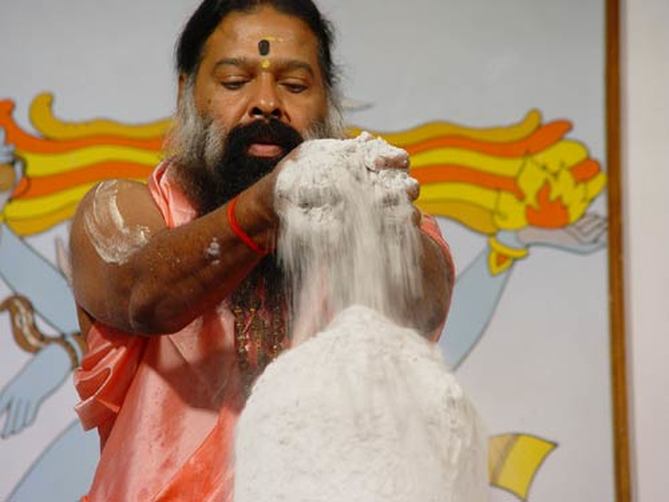
Some Hindus meld both the three horizontal vibhuti lines of Shiva and the 'U' shape thilaka of Vishnu in an amalgam marker signifying ‘Hari-Hara’ -Vishnu-Shiva. In addition, sacred ash signifies that the body's origin is from dust and ash and to dust and ash it shall return. The ash is a marker of impermanence. After-all burnt cowdung is the reminder of the temporary nature of the physical body. It reminds one to strive for spiritual attainment and closeness to God. Everything in the interim is but an illusion or maya.
Bhasma is specially associated with Lord Shiva, who applies it all over His body. According to Hindu mythology Vibhuti or Bhasma is said to be favorite to Lord Shiva and that's why He is often called Vibhuti Bhushan, meaning the one having ash as his ornament.
Among the Vaishnavites, Tripundra seems to have derived from ‘Pundarika’ which is the name of Lord Vishnu. Pundarika means Lotus. ‘Tri’ here refers to the ‘triguna’ being Satva, Raja and Tama. It is also indicative of ‘Triloka’, that is Bhunu, Bhuvaha, Suvaha or ‘Tritapa’, that is Bbhoutika, Daivika, Adhyatmika. Bhasma takes the essence of sacrifice in the sense the sacred ash has lost its original shape, size, colour, fragrance, karma which has been burned for the sake of being used for light or food. God burns himself in the form of the Sun to give light and life to the whole universe.
MAKING VIBHUTI
This is given by Muzhu Neeru Puchiya Munivar’ in the Periayapuraanam. KARPAM is the sacred fire grown for Lord Siva, with Siva mantra praised by celestial bodies putting thus accepted cow-dung saluting the Holy feet of the Three Eyed Lord, the Holy Vibhuti that results is karpam. ANUKARPAM is bringing dung dried in the forest, powdering it, wetting with water of the cows, with the Athithira mantram, casting it and putting ritual fire and taking the properly burnt Vibhuti. UPAKARPAM is other than ash from the forest fire, making balls out of the dung with the water of the holy cow, go jala, chanting holy mantras and burning in the ritual fire and holy Vibhuti thus obtained. AKARPAM is other than karpam, anukarpam and upakarpam, the unacceptable. The Periapuraanam states that ‘thus taking the Sacred Ash humbly chanting the Siva mantra, the slaves of the Lord adorn themselves. The Holy ash, the fame and fruit, which is extensive to explain, makes good for the devotees who wear with respect for spiritual progress. The munis wear this holy substance praising God.Let the Holy ash and its glory as found by the Muzhu Neeru Puchiya Munivar, be remembered.’
APPLYING VIBHUTI:
METHOD 1.
SIVA PUJA: Devotees who perform Siva-puja or rituals, should take Vibhuti in powder form without adding water. This is sprinkled on the head, forehead, chest and two shoulders. Later, be seated in padmasana posture, use the right hand index, middle and ring finger to take vibhuti and place it in the left palm. Close it with the right hand and chant mantras.
PANCHAKALA MANTRA: Om, Nivriti kalayai namah, Om Pratishta kalayai namah, Om Vidya kalayai namah, Om shanty kalayai namah, Om shantyatita kalayai namah.
PANCHABRAHMA MANTRA: Om Ishanaya namah, Om tatpurushayah namah, Om aghoraya namah, Om vamadevaya namah, Om sadyojadaya namah.
SHDHANGA MANTRA: Om, Hridayaya namah, Om Shirashe namah, Om Shikayai namah, Om netraya namah, Om astray namah.
After chanting the above mantras, say Hridayaaya Namah – add water. Say Kavachaaya vaishat – mix it. Then chant the first four lines Panchabrahma mantra (above), use the index, middle and ring finger to and apply the Vibhuti paste on head, forehead, two ears and two eyes. Chant the last line of Panchabrahma mantra when applying to other parts of the body. (See list below)
METHOD 2
MANTRAS IN THE SRI RUDRAM
There are two important and well known Mantras in Sri Rudram. Panchakshari Mantra and Mrithunjaya Mantra .
MRUTYUNJAYA MANTRA: The Upanishads say that the famous Mrutyunjaya mantra should be chanted whilst applying ash on the forehead, thus:
“Tryambakam yajaamahe sugandhim pushtivardhanam Urvaarukamiva bandhanat mrutyor muksheeya maa amritaat” - “We worship the three-eyed Lord Shiva who nourishes and spreads fragrance in our lives. May He free us from the shackles of sorrow, change and death effortlessly, like the fall of a ripe cucumber from its stem”
The Mahamrityunjaya Mantra is hailed by rishis and sages as the heart of the Vedas. It is a “great death-conquering mantra" and is also known as “Tryambakam Mantra”. It is sometimes known as the Mrita or Sanjivini mantra because it is a component of the ‘life-restoring’ practice given to the primodial sage Shukra after he had completed an exhausting period of austerity.
It is a verse of the Rigveda 7:59:12 and reoccurs in Yajurveda 1.8.6.i. Next to the Gayathri mantra the Mrithunjaya mantra is a widely recited mantra by Hindus. Mahamrityunjaya Mantra is dedicated to Tryambaka, the ‘three eyed one’ – a reference to Rudra. In that sense it is Rudra mantra as it refers to the furious aspects of Shiva’s attributes. It is a ‘life-restoring’ mantra and used in contemplation and meditation. The mantra conceives all the four ‘purushaartas’ or objectives of life - dharma or righteousness; artha or wealth; kama or desire and moksha or liberation. Among its meaning there are three key words: Pushtivardhanam, Sugandhi and Thryambaka needing elaboration. The remaining words means:
‘Aum’ – This is the sacred pranava mantra;
‘yajamahe’ - means ‘we worship, adore and revere you’; ‘
vardhanam’ – is one who nourishes, strengthens or restores, for example health or wealth;
‘urvarukam’ – here ‘urva’ means ‘vishal’ or big, powerful or deadly. ‘Arukam’ means disease. Thus ‘urvarukam means deadly and overpowering diseases. The pumpkin or cucumber interpretation is given to show detachment. The diseases are those caused by the negative effects of the three gunas and therefore (a) ‘avidya’ – ignorance or falsehood and (b) ‘sadripu’ – a constraint of the physical body.
‘bandhanan’ – ‘bandha’ means bondage. ‘bandhanan’ would therefore mean ‘from capitivity’ that is from the stem of the cucumber.
‘mrtyor’ – from death;
‘ma’ – not
‘amrtat’ – for immortality; emancipation
Pushtivardhanam: Pushti means well nourished condition, fullness of life, broadly meaning material benefits. In the beginning stages of life, we all seek material benefits - artha and kama. After artha the basic need one looks forward to kama. Artha and kama together is called pushti. The Vedas say pushti alone is not enough as it relates to this janma only. So Rudram says if you are interested in basic needs and material benefits, come to me as there are other subtler matters such as punya karma.
Sugandhi: Sugandhi means fragrance. The word in the mantra does not refer to physical fragrance, ie perfume but fragrance of character. Perfume emanates from a source and spreads to a reasonable distance. As such noble character spreads with warmth. It is said in the Vedas that one standing under a tree benefits from the fragrance of the flowers. Thus one standing under the shadow of the Lord has the benefit of His dharma. This motivates us to serve selflessly.
Thryambaka: Thryambaka means “one who has three eyes” referring to Rudra or Siva who share the same attributes. (1) Firstly, in His ‘vishwaroopa’ or universal form, the three eyes symbolically signify the sun, moon and fire. Sunlight during the day, moon at night and fire in their absence signify illumination. (2) Secondly, one’s pair of eyes give sight to the material world and its experiences. The third eye is symbolic of ‘atma-jnana’ or knowledge of the Self through which one sees the higher reality. Kamadeva or Manmatha is the God of Desire perennially churning the mind and causing restlessness.
Lord Siva is said to have burned Manmatha with His third eye. This signifies that one burns down all desires through jnana and progress the spiritual path. (3) The third signification is depicted by a Puranic story. Asuras had amassed strength, wealth with which they built three cities. The three cities symbolise Maya. Lord Siva burns down the cities with His third eye.
The three cities indeed represent (1) sharirathryam - the three bodies – gross body, subtle body and casual body; (2) prapanchathryam - the three worlds - gross world, subtle world and casual world; (3) ‘gunathryam’ - the three gunas - satva, rajas and tamas; One becomes a ‘trigunaatita; ie to go beyond the three gunas by devotion and worship of the Lord. (4) avasthathryam -the three states of experience - waking, dream and deep sleep.
METHOD 3
THIRUNEETRUP PADHIKAM: This was sung by the Poet Saint Thirunjnana Sambanthar in Tamil rendition. It is sung in Thirualavay Thalam. Chant this mantra while taking Vibhuti and while adorning the body with the Aghora-Panchaksharam – Sivaya Namah. This padhikam is from the second Thirumurai and comes to memory with the Tamil lines ‘Mandhira maavadhu niru, Vanavar meladhu neeru, chundhara mavathu niru, thuthikkap padubathum niru…….’
METHOD 4
SADYOJAADI MANTRA: Rudrakhsa and rudraksha mala are essential to Shiva devotees. They are spiritually significant. Take Vibhuti while chanting Sadyojaadi mantra and mantra from SRIRUDRAM. (See posting on Rudraksha)
METHOD 5
The relationship between man and Lord Siva, for that matter God is a personal one. The Lord is aware of our limitations. More than the ritual, it is the bhavana – attitude that is essential in His worship. He accepts even the simplest chanting of 'Na Ma Si Va Ya' while vibhuti is worn on specified places. He would also hear, Om Namasivaya, SivaSiva, the Pranava mantra and other simple forms of mantra that is committed to memory. Anything offered with devotion is accepted by the Lord.
PANCHAKSHARI MANTRA: - “Namassivaya ca Sivataraya ca.”
Om Namah Shivaya – These five syllables constitute the most potent and popular mantra, which is at the heart of the Vedas and Tantra. Various interpretations are given to these syllables, nearly all focussing on meanings for mantra meditation leading to Self-Realization.
OM/AUM: The three parts of Om (A-U-M) encompass the three states of walking, dreaming, deep sleep; the three levels of gross, subtle, causal; the three levels of conscious, unconscious, subconscious and the three universal processes of coming, being, and going. The silence after these three levels or after AUM is Absolute silence. It also refers to Tripura, the one who live in the "three cities" as in Mahamrityunjaya Mantra, as well as the light referred to in Gayatri Mantra.
Namah/Namaha: Adoration, homage, respect. Nothing is mine (as an individual person); everything is thine (as the Absolute Reality). The three levels of Om, the three worlds of gross, subtle, and causal, along with the three states of waking, dreaming, and deep sleep states of consciousness, as well as the three levels of conscious, unconscious, and subconscious themselves are "not mine" as the true properties of who I really am. Truly, "nothing is mine." Rather, everything, all of these triads is "thine" or the "other" as the Absolute Reality.
The Five Sacred Syllables: The Om Namah Shivaya mantra has five syllables: Na-mah-shi-va-ya (sometimes called six syllable mantra by including Om). Thus, Om Namah Shivaya mantra is called five-syllable mantra, or Panchakshara Mantra (panch means five). Among other things, these five represent the five elements of earth, water, fire, air, and space. Thus, the Om Namah Shivaya mantra leads awareness in the reverse order from manifestation back to the source from which manifestation arose.
‘Nama' also takes the meaning ‘salutations’ and 'Siva' among other interpretations means auspiciousness. There are also meanings to the extent that the five letters as Siva’s forms: Na from Nagendra meaning one who wears the garland of snakes; Ma from Mandakini Salila meaning one who bathed in the water of Ganges; Shi meaning the Supreme Lord Shiva and Va from Vashishta as one who is praised by the sage and Ya from Yaksha – one who takes the form of Yakhsa. The essence of ‘Namasivaya’ is also - 'The one who eliminates all inauspiciousness, to that auspicious one, I offer my prostrations'. This is considered the most significant and almost the one mystic line in the whole of Yajurveda. The Panchakshari mantra is also known as Saranagati mantra.
Saranagati means surrender and the purport of Om NamaSivaya is that one has surrendered to the Lord, subjected himself to Siva’s mercy and also to universal karmic laws of cause and effect. As such one should be ever willing to accept karma phalam – the fruits of our actions.
SIVA PRASADHAM: Siva prasadham is also mentioned as Iswara prasadam: Prasadham is what God has for us and this should be accepted with love. After temple prayers vibuthi and ponggal is accepted as prasadha. There is no dwesha – dislike, hatred or aversion towards temple prasadha. One has to welcome and accommodate life’s encounters. Every issue or shortcoming is deemed to be Iswara prasadham. Accepting life’s shortcoming and happiness as karma phalam is saranagathi. This attitude brings about shanty or peace. Om
There is also interpretation of “Om Namah Shivaya” as the combination of several words of purport. ‘Na’ represents earth and Brahma; ‘Ma’,represents water and Vishnu; ‘Si’ fire and Rudra; ‘Va’ Vayu and Mahesvara; ‘Ya’ Akasa and Sadasiva and also the Jiva.
PLACES OF APPLICATION: Agneyam is taking bath in Vibhuti. It is defined in the Vedas as Agneyam bhasmasnanam. Vibhuti can be worn in Five, Eight, Sixteen or Thirty two places. There are two broad categories of wearing Holy Ash. The first is Uddulanam which means the sprinkling of Vibhuti on the body. The second is Tripundram that is in the three distinct bands. (see above)
FIVE PLACES: Forehead, Two shoulders, Chest, Navel;
EIGHT PLACES: Head, Forehead, Two ears, Two shoulders, Chest, Navel;
SIXTEEN PLACES: Head, Forehead, Two ears, Neck, Two shoulders, Two elbows, Two wrists, Chest, Navel, Two ribs, Back;
THIRTY TWO PLACES: Head, Forehead, Two ears, Two eyes, Nose, Mouth, Neck, Two Shoulders, Two Elbows, Two Wrists, Chest, Two ribs, Navel, Two sides of the groin, Buttocks, Two Urus, Two Thighs, Two Knees, Two Ankles, Two Feet.
VUBHUTI IN THE SCRIPTURES:
Vibhuti Yoga in the Gita: In Chapter 10 of the Bhagavad Gita, titled Vibhuti Yoga, Lord Krishna uses the term 'vibhuti' to describe divine attributes such as magnificence, splendour, glory and prosperity.
(1) "Some skilled in Vedasiras call the besmearing the whole body with sacred ashes Pasupata; others call it Sirovrata; others, Atyasrama; others, Vrata and Sambhava": Jnanayoga Khanda of Sutasamhita, 14th Adhyaya.
(2) Besmearing the body with the sacred ashes and repeating six mantras is called Pasupata in Atharvasiras; in Mundaka (3. 2. 10) Sirovrata; in Svetasvatara 6. 2.1 and Kaivalya. Atyasrama; in Kalagnirudra, Vrata and Sambhava.
(3) Sivarahysa says "Those belong to Taittriya think, O Uma, that sacred ashes should not be neglected."
(4) The word Bhuti (sacred ashes) is found in Taittriya 1, 11, 1.
(5) Again the Sutasamhita says "Besmearing the whole body with sacred ashes and wearing on the forehead and other limbs with three streaks of ashes form appendages to knowledge (Para Vidya): Yajnavaibhava Khanda, 30th Adhyaya.
(6) "Besmear the body with ashes repeating" Agni is the ashes, Jalam is the ashes" (i.e. adding the word Bhasma at the end of the words Anilam, Vayu, Amrita as in the order mentioned in Atharvasira) - Brihadaranya7.15.1; Isavasya Upanishad 17th mantra
(7) Pasupata Vrata Adhikarana - As besmearing the body with sacred ashes forms an appendage to the study of Upanishads and Brahma Sutras.
(8) Other references: Saiva Bhasya, III. 4. 48, 49; Kailasa Samhita; Linga-purana, Vayu-Samhita, Maha-Bharata.
Sivoham, Sivoham, Sivoham. Om Nama Sivaya.
By Yogi Ananda Saraswati
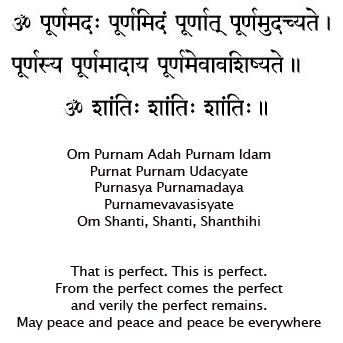
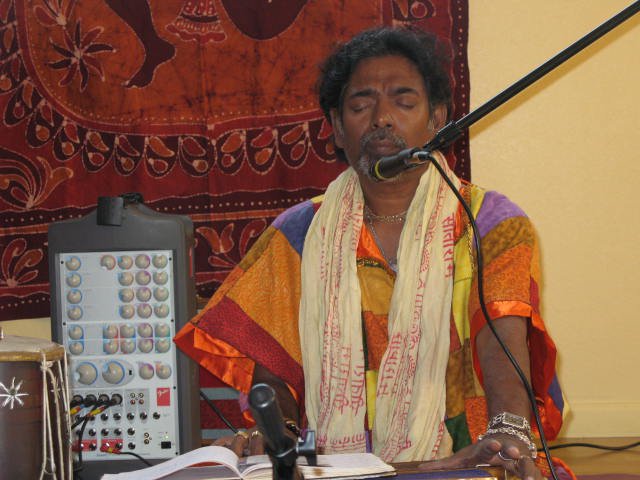
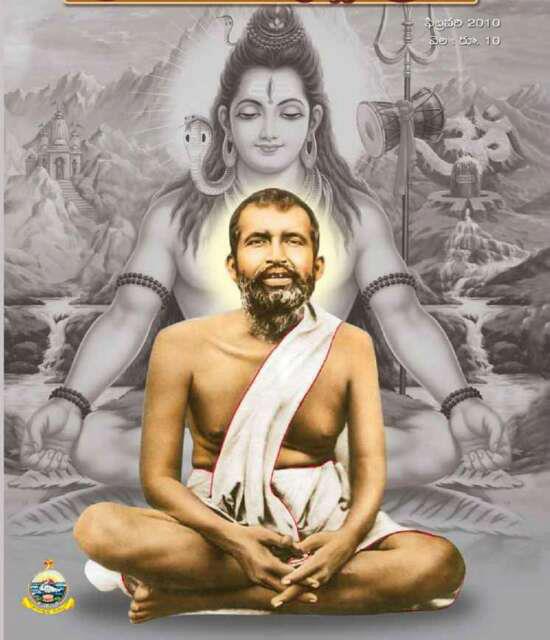
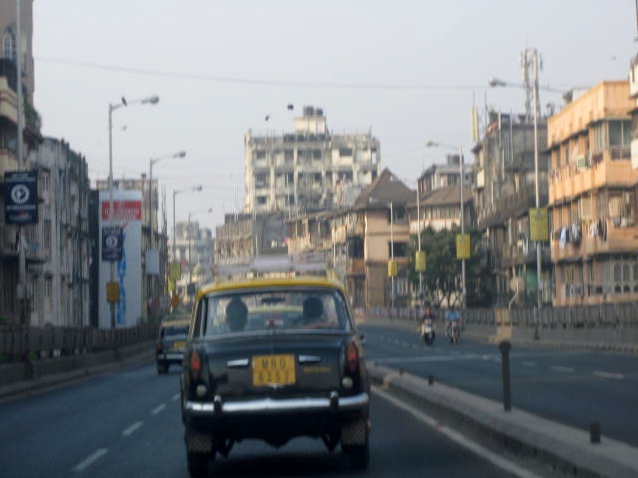
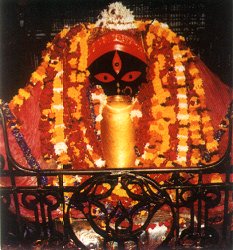
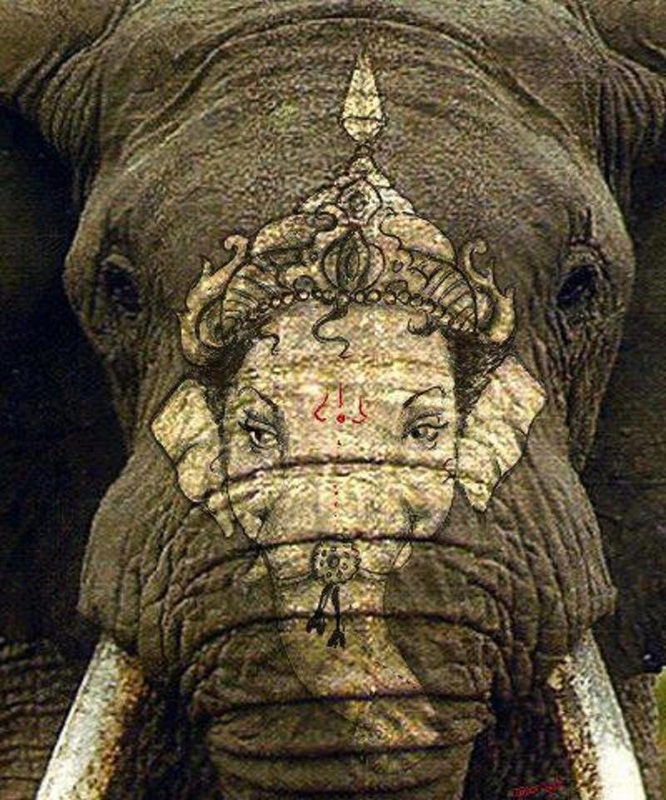
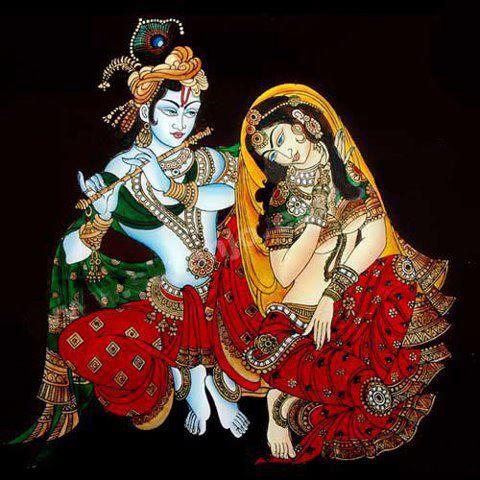
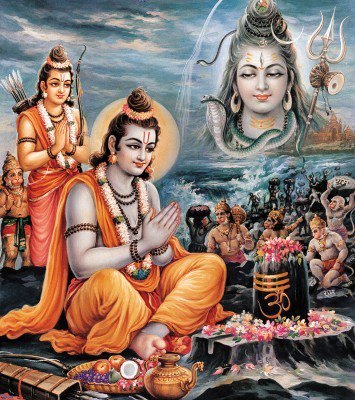
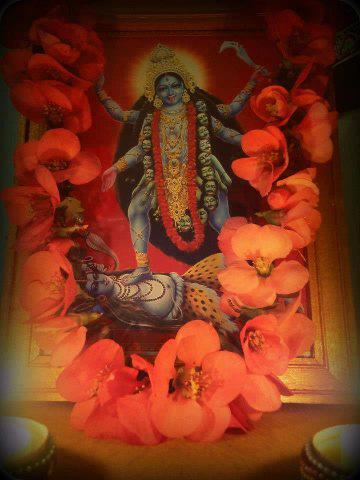
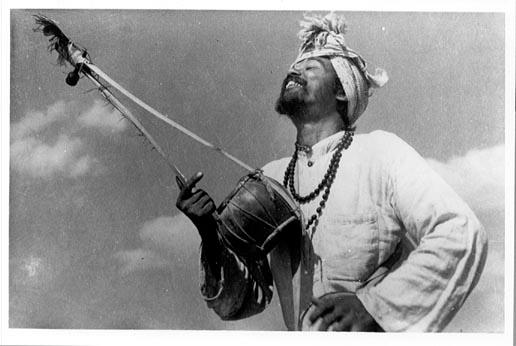
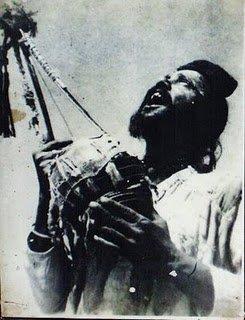
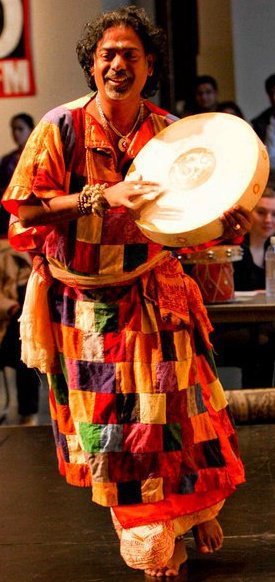
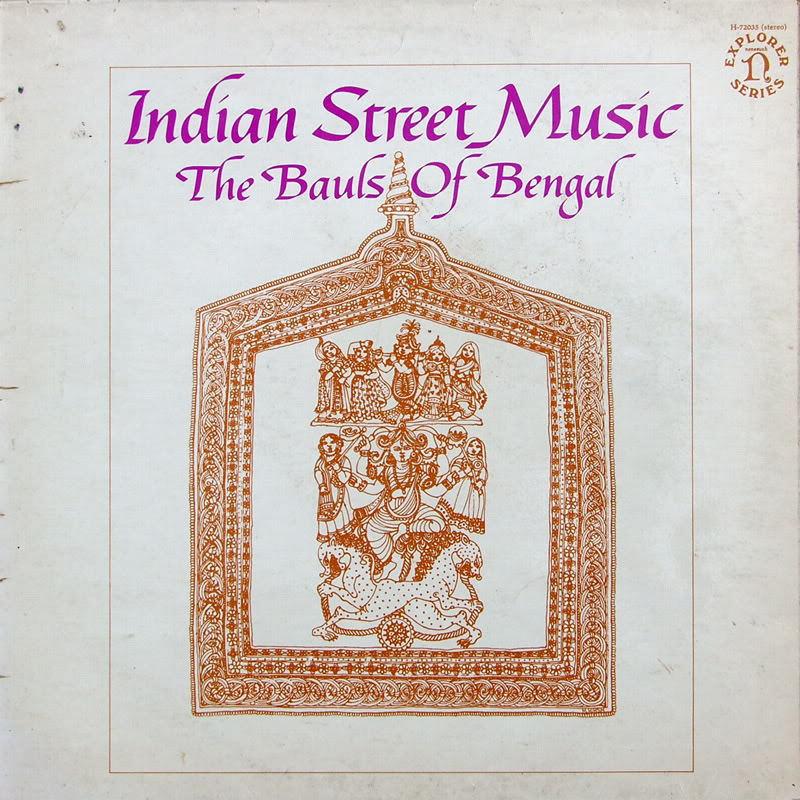
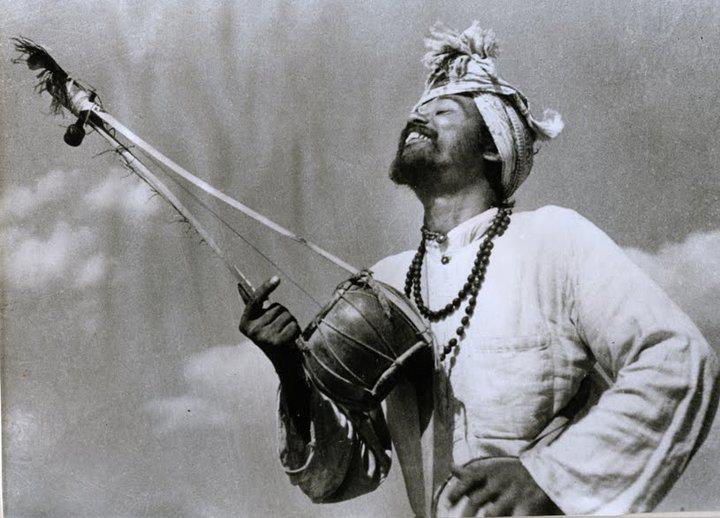
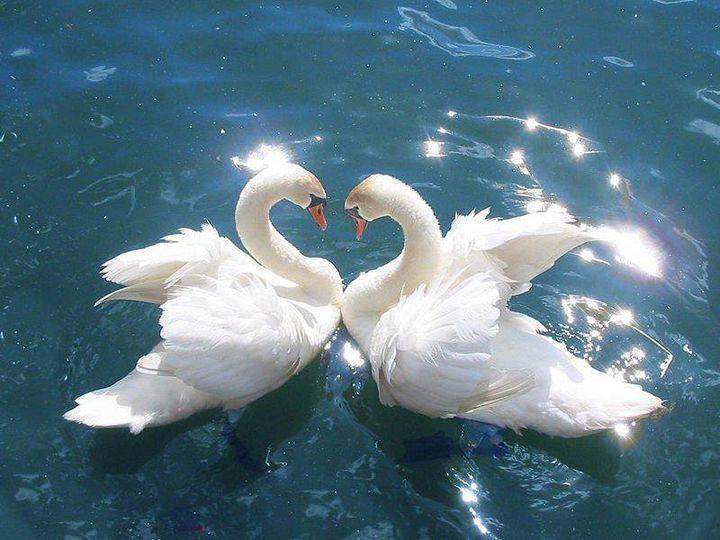
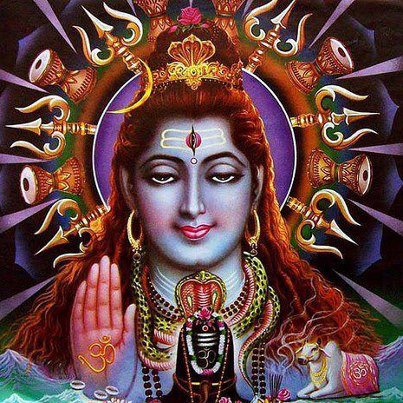
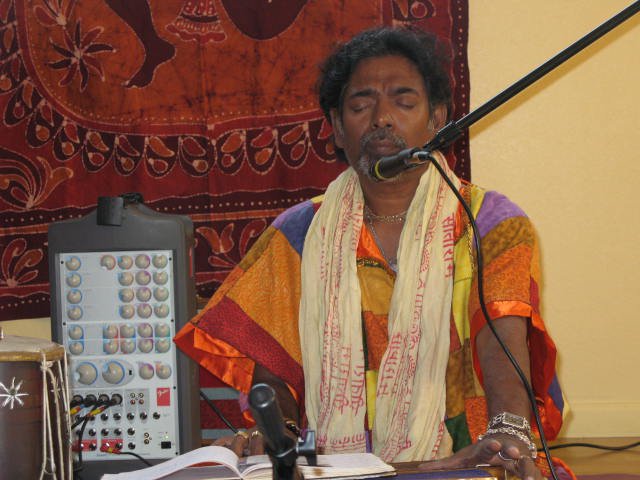
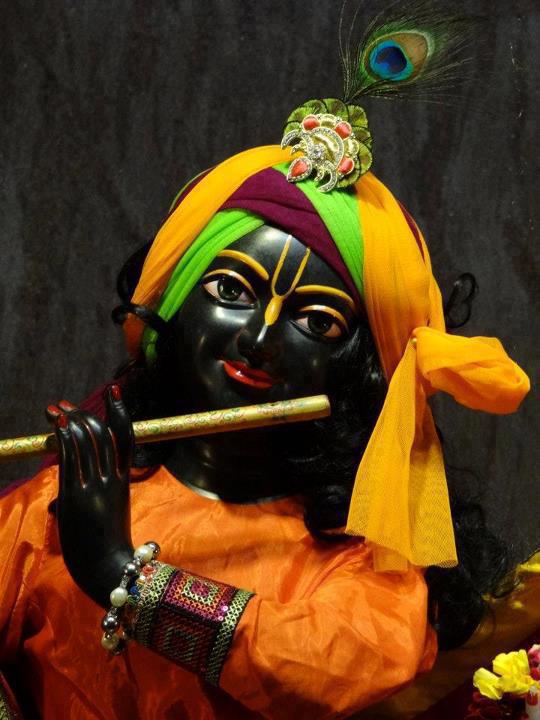
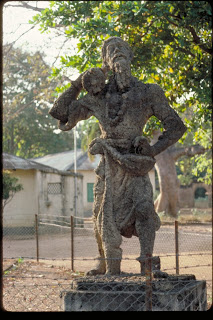
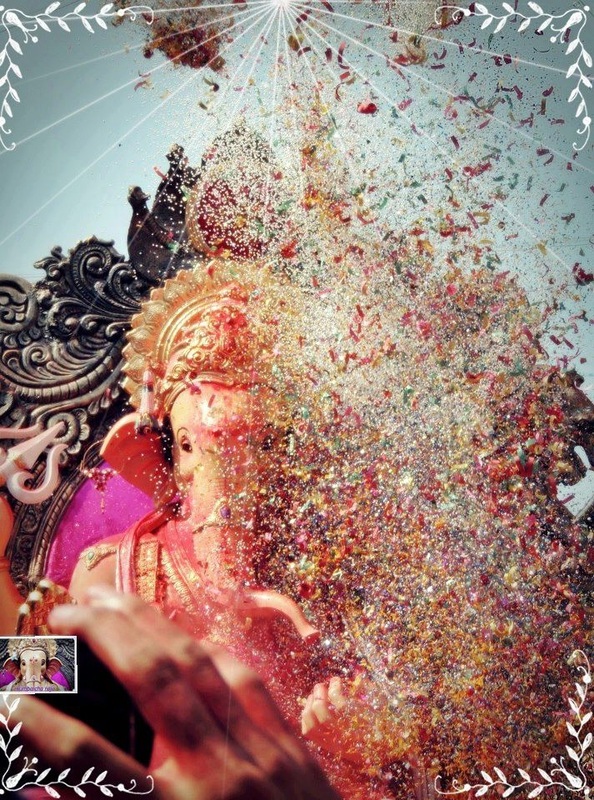
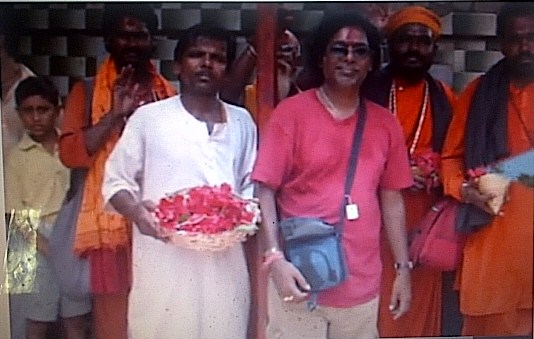
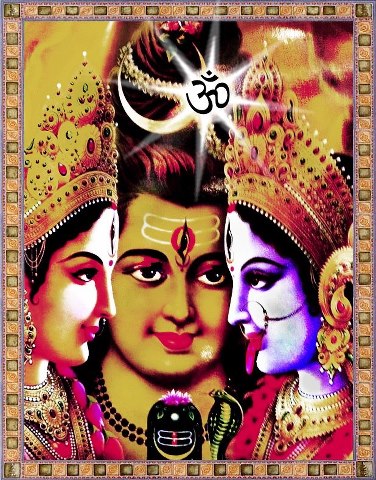
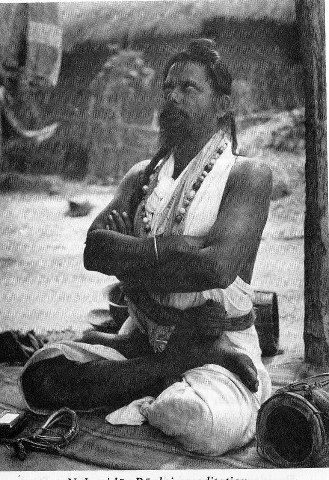
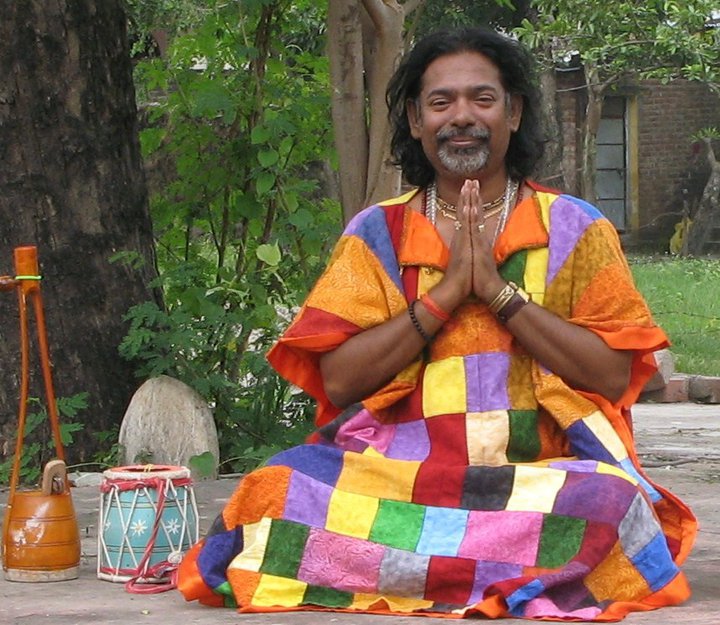
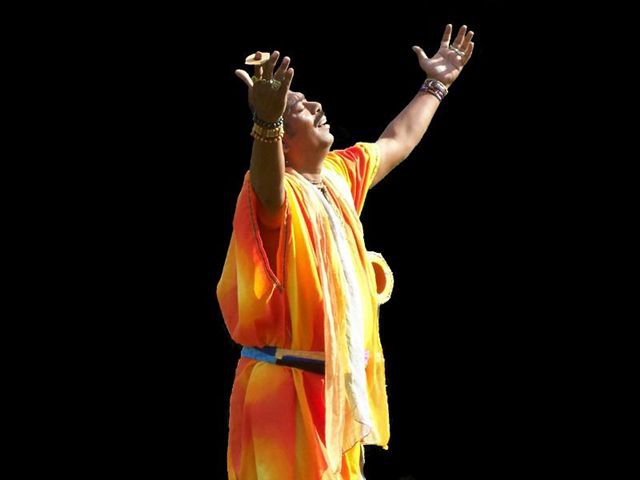
 RSS Feed
RSS Feed
